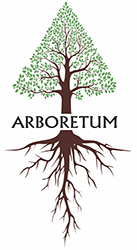Weigela florida
It grows in mixed forests and shrubby steppes at an altitude of 100-1500 m above sea level. It is found in the provinces of Hebei, Heilongjiang, Henan, N Jiangsu, Jilin, Liaoning, Nei Mongol, Shaanxi, Shandong, Shanxi (Japan, Korea).
It is a deciduous shrub up to 3 m in height. Young branches with two bilateral lines of short, fast-growing hair along the internodes. The bark is gray. Kidneys sharp, with 2 or 3 scales
Deciduous upright shrubs that do not form stolons.
Winter buds with several spiky scales. The arrangement of the leaves is opposite. Leafy leaves, rarely almost sessile, serrate or serrate, dentate, without stipules.
Flowers are single or one to six (rarely more), on young, elongated, leafy shoots in the axils of the upper leaves, white, yellowish, pink, purple or dark red, almost sessile or on less developed peduncles, sometimes fused to a common peduncle . Calyx with five blades connected at the bottom or separate; the corolla is tubular-bell-shaped or funnel-shaped, two-lipped or slightly zygomorphic, with five blades, the tube is much longer than the blades. Five stamens, they are shorter than the corolla; anthers linear, free or soldered under the stigma around the column, the column sometimes protruding; stigma capitate or cap-shaped; the ovary is bilobate, oblong.
The box is ligneous or cartilaginous, from narrowly cylindrical to ovoid-ellipsoidal, narrowed at the top to the spout, formed by the upper part of the ovary, opening with two leaves, with the placenta remaining in the form of a central column. Seeds are angular, small, often winged.


